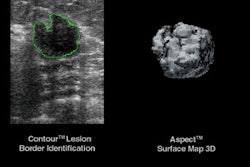LAS VEGAS - When it comes to allegations of medical malpractice, the biggest threat to radiologists is a delayed diagnosis of breast cancer. But one expert says thoughtful consideration and consistent documentation can help mammographers mitigate the risk of lawsuits.
Dr. R. James Brenner, medical director of breast imaging services at the John Wayne Cancer Institute in Santa Monica, CA, addressed the field’s medical-legal pitfalls in a presentation Monday at the National Interdisciplinary Breast Center Conference. His message for attendees: conducting your business well is your best defense.
The threat of litigation is always present, given that imaging offers no perfect means of diagnosing breast cancer. But defendants usually win their cases because what the courts expect is appropriateness, said Brenner, not unattainable perfection.
"A lawsuit may be triggered by an adverse result but the trial is about your conduct," Brenner noted. And given that reality, breast centers should conduct their business consistently on a variety of fronts.
For radiologists, the most important task is to keep up with the latest standards and practices in breast imaging and cancer diagnosis. The law recognizes three sources for standards of care in medicine: statutory standards, guidelines, and common law.
The statutory standards in breast imaging are well defined through the Mammography Quality Standards Act (MQSA). Failing to meet MQSA requirements, such as patient notification, may give plaintiffs’ lawyers easy fodder in litigation, Brenner noted. It’s also important to get as much breast tissue imaged as possible.
Guidelines from the ACR or other organizations aren’t tantamount to a standard of care, Brenner said. "But if we deviate from them, we need to know what we’re deviating from," he noted. "A rational basis for deviation is OK."
As for common law standards, there’s limited guidance for centers because the precedent-establishing appellate courts rarely dissect the details of alleged medical malpractice, he said.
Another important conduct consideration for breast centers is reserving medical judgments to those who are qualified to make them. For example, "no one should say a dominant mass is just a cyst unless they’ve put a needle in it or seen it on ultrasound," Brenner said.
Documentation is another major means for centers to defend themselves in litigation, he noted. "A common flaw is that the examination simply isn’t charted," Brenner said. If a center fails to note years of normal mammographic findings, "you certainly invite a lot of question marks when a cancer ultimately appears."
Any charting errors that require correction should be done immediately with a dated and initialed notation that strikes through the erroneous information with a single line. And of course, any "doctoring" of a chart after a lawsuit has been filed is a sure-fire way to lose credibility in court, Brenner noted.
Quality documentation begins with patient intake sheet, he added. If the patient writes that she’s felt a "lump" that is actually fibrocystic disease, the patient should be asked to initial and date a correction. And if there’s a palpable abnormality that is mammographically occult, the radiologist needs to know about it so that ultrasound is then employed, Brenner said.
And then there are the administrative tasks that must be done, Brenner said. Among them: Making sure that a patient referred to specialists makes it to the follow-up care, lest the radiologist be sued for the tort of "abandonment." Also, obtaining informed consent for any kind of invasive procedure is essential, he concluded.
By Tracie L. ThompsonAuntMinnie.com contributing writer
February 28, 2002
Related Reading
Ultrasound aids mammography in breast cancer diagnosis, December 3, 2001
BIC presenter offers ways to reduce false-positive breast biopsies, October 16, 2001
Misdiagnoses, lack of supervision, and poor communication land radiologists in court, May 17, 2000
Copyright © 2002 AuntMinnie.com



















